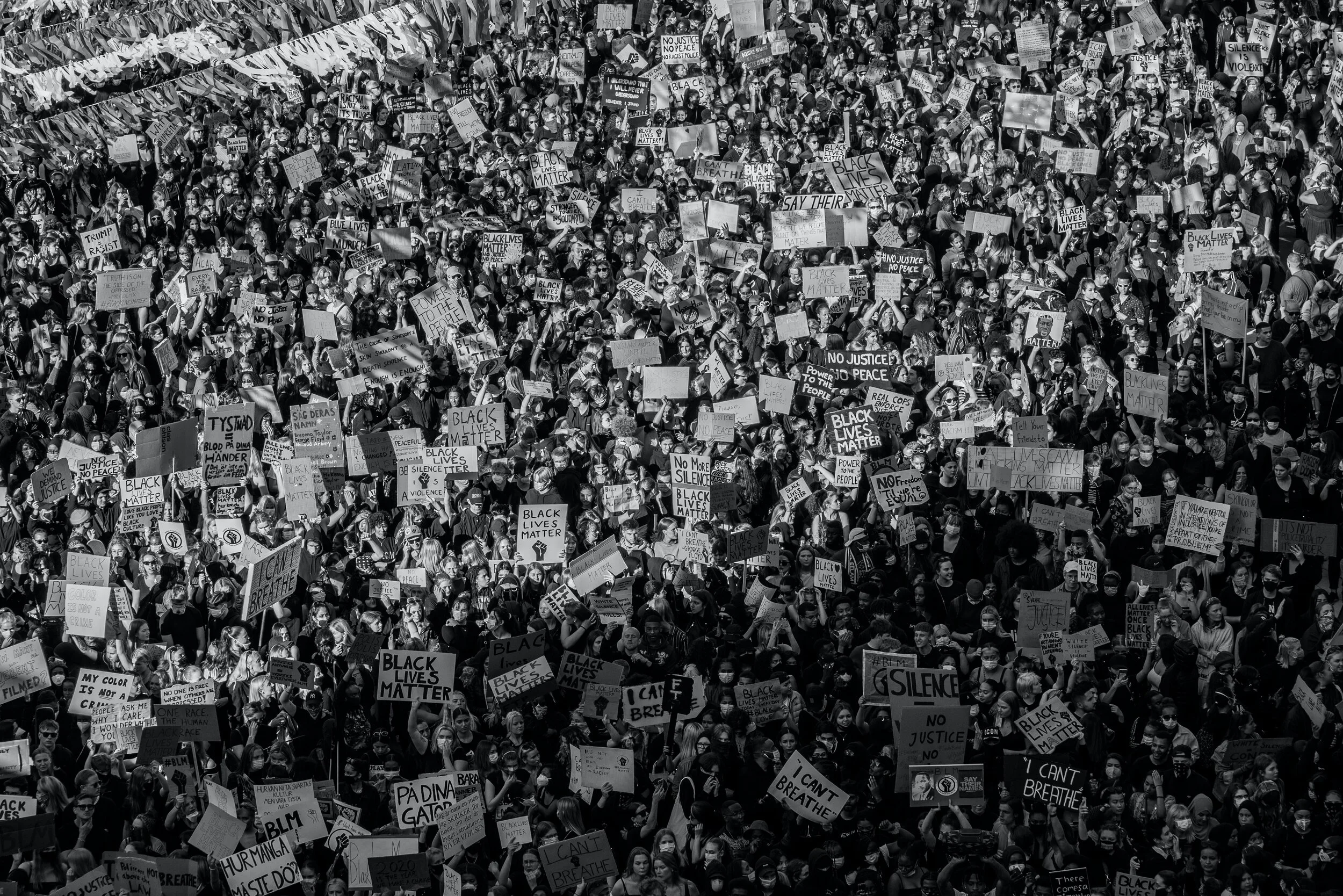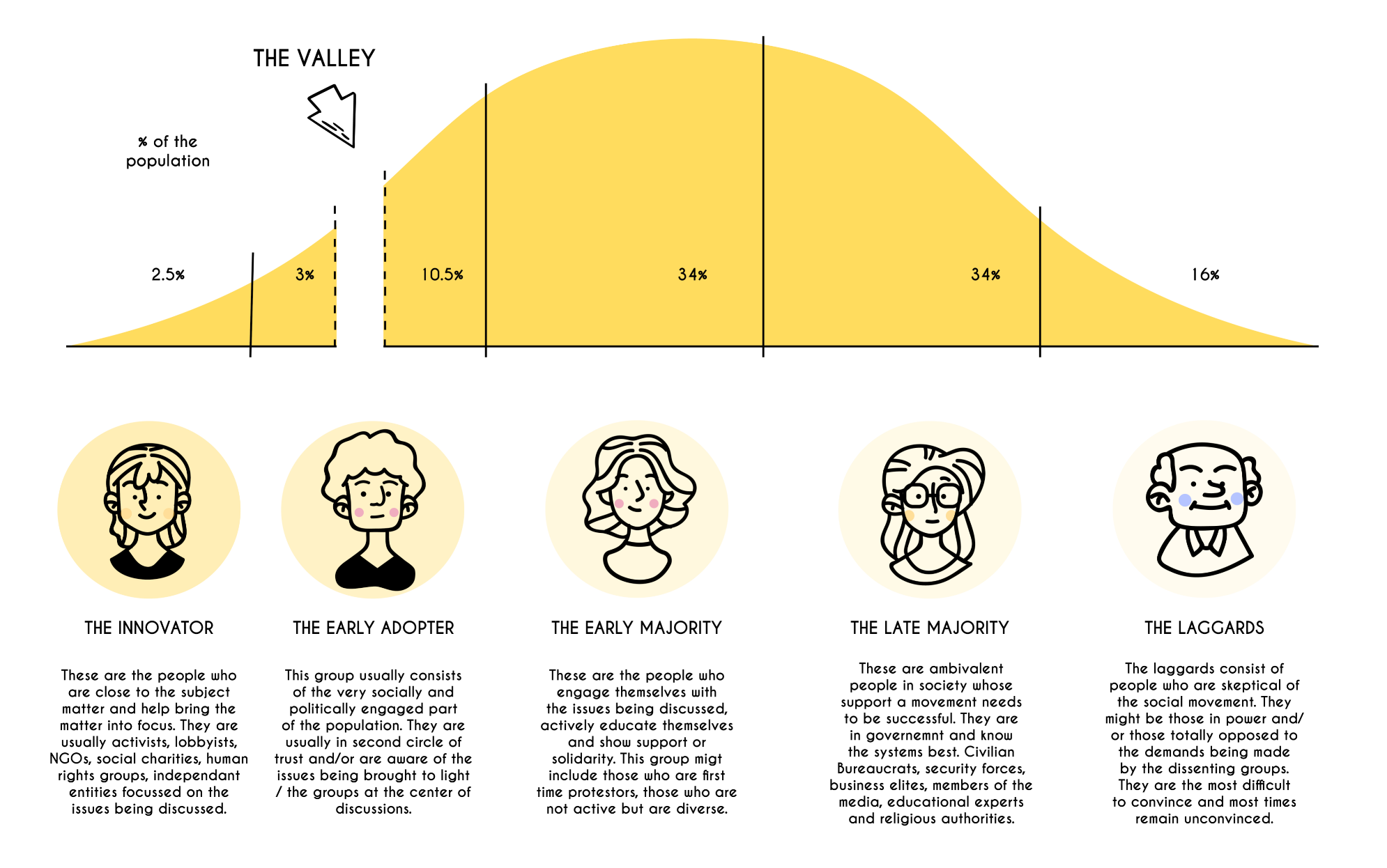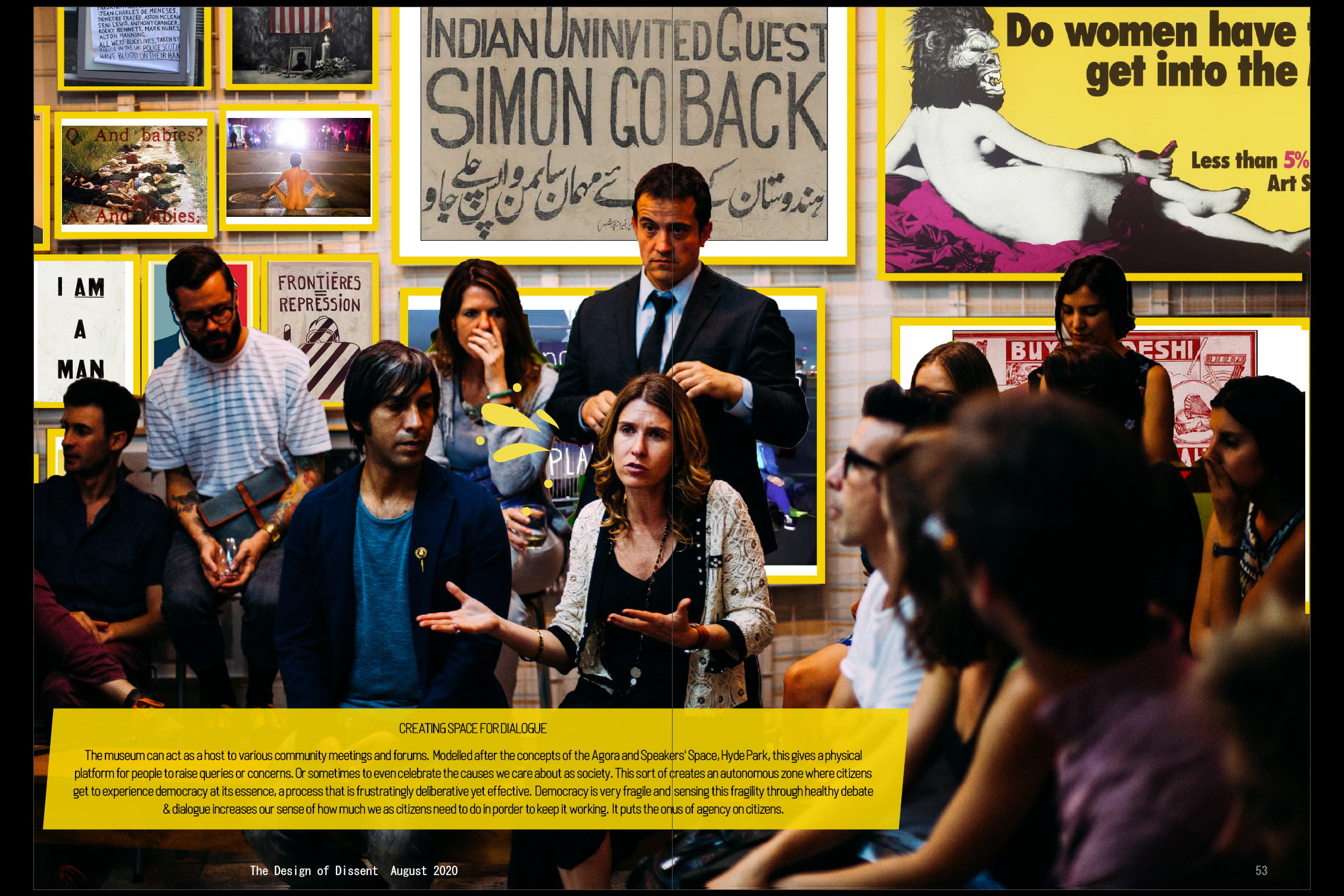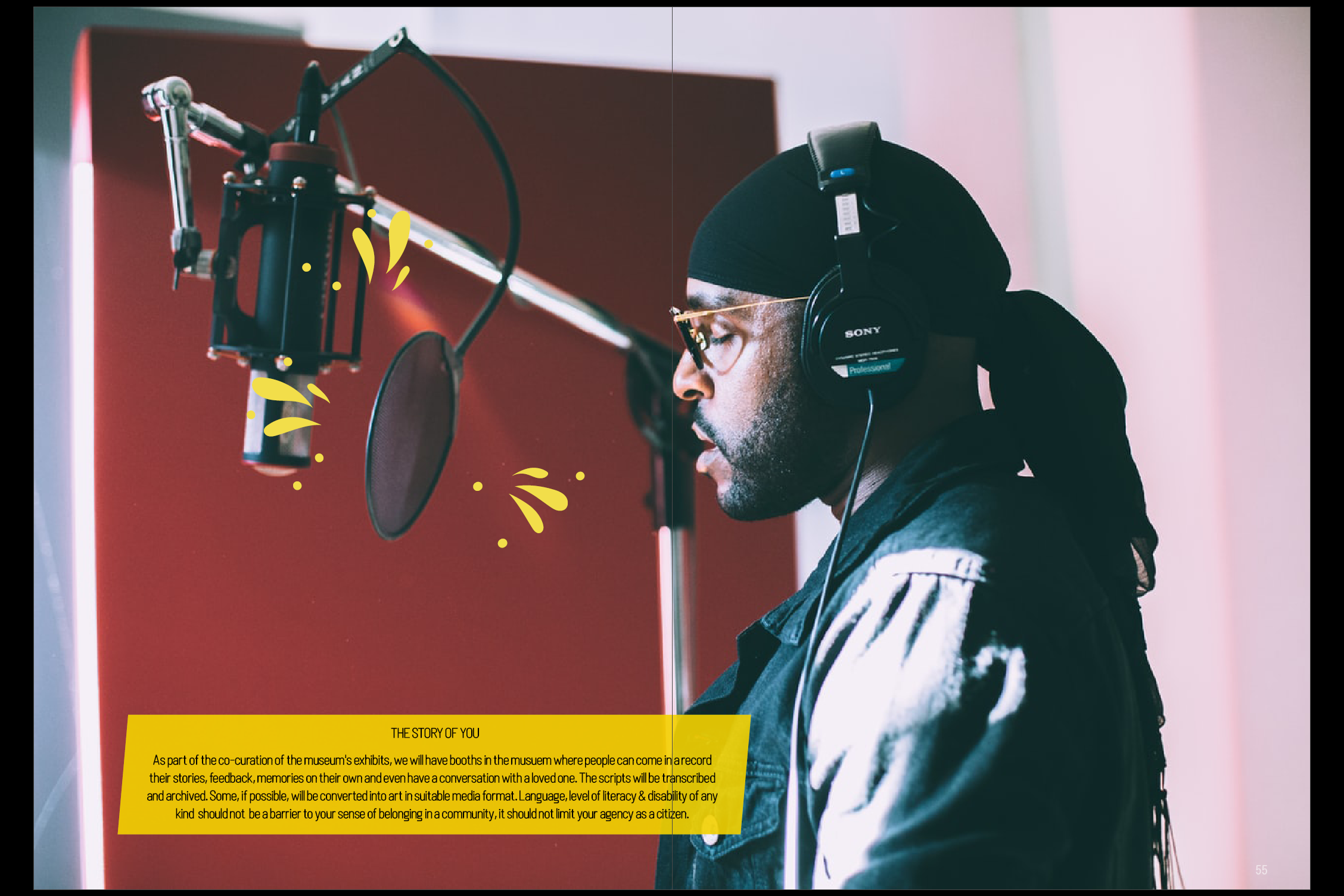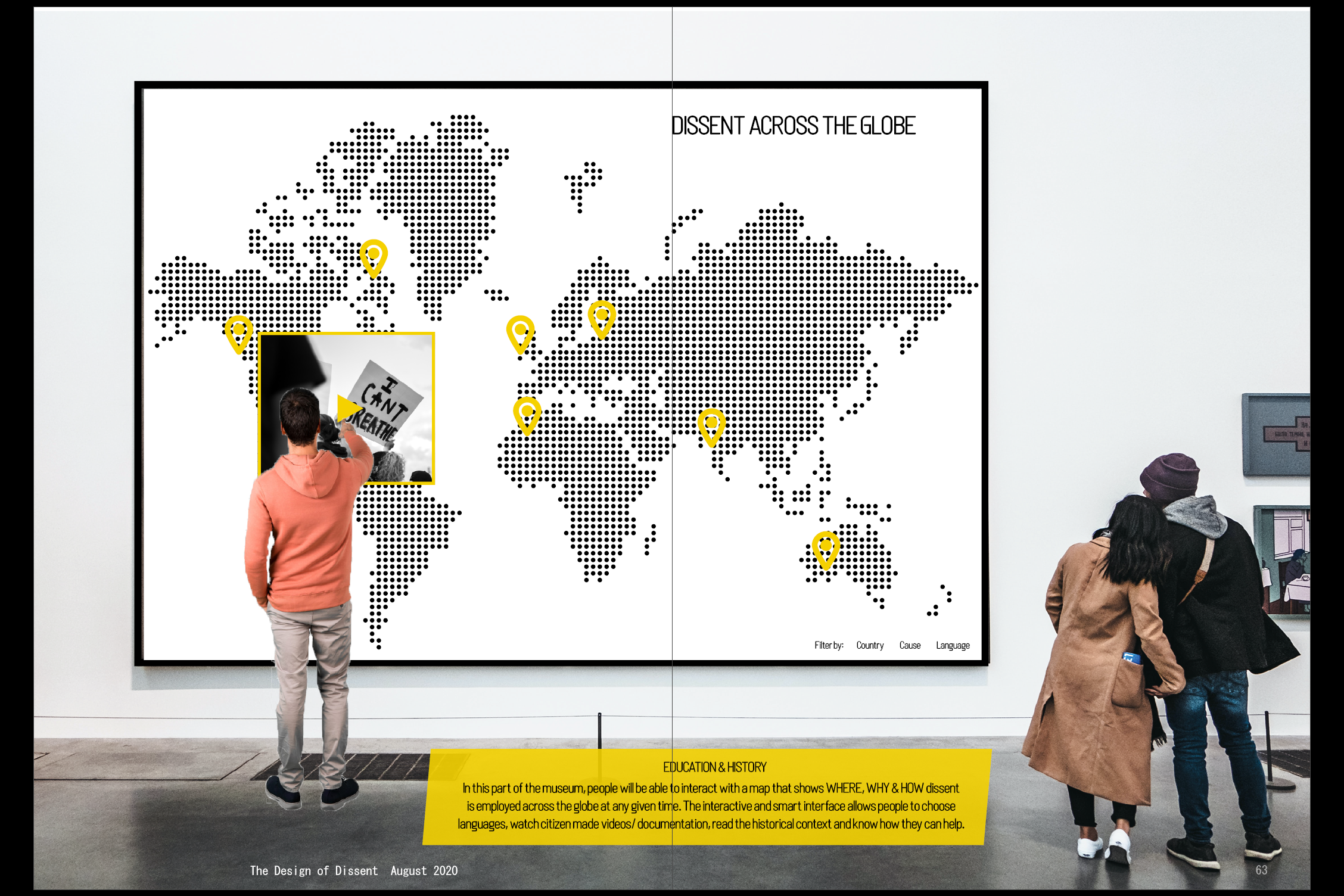The Design of Dissent.
Every action is political. Every act of inaction is political. The Design of Dissent seeks to explore critical civic participation, the pleasure of agency, and the process of collective legacy-making.
The Challenge: While expressing Dissent is an important part of democracies, the percentage of citizens who know about their Right to Protest, the different ways to participate in a critique against their government, and the legacy of these social movements remain minimal.
The Outcome: The Design of Dissent combines public pedagogy and participatory design to design a co-curated and co-created space where citizens can educate themselves, engage in, and commemorate people’s power and struggles from the past.
The overall aim of this project is to identify how citizens perceive their duty of participation in government, especially in terms of dissent and our civic education on this particular topic. My focus is especially on the process of collective legacy-making, trust in institutions, and different approaches to critical civic participation, in times of protest and social change. Part of this research’s methodology is focused on pedagogy, the approaches that people take to the practices of learning and how this process influences and is in turn influenced by the social and political lives people lead and combining that with the concepts of participatory design such that the eventual design output is thoroughly based in democratic values.
Following a qualitative case study + participatory design approach, this research intends to build a rich in-depth investigation focusing on how civic education is realized in our political lives and how critical sentiments are expressed by the citizenry, through the use of interviews, workshops, surveys, and document analysis. Results of this project are intended to bring more clarity to the ‘design’ of dissent, legacy of people’s movements, people’s trust in institutions (or lack thereof), and the viability of leaderless social movements. Through this project, I sought to create a taxonomy and anatomy of dissent. If the taxonomy familiarizes us with the different types of structures of a protest movement, the anatomy tells us about the people that populate it.
While the success of a protest depends on numerous social, political, cultural, and economic factors, after considerable research, I was able to surmise that movements that have been successful so far have a few things in common.
I conducted Digital ethnography due to the lockdown and had to move all of my research online. After identifying a dozen people from all over the world, situated in different scopes within the inquiry ecosystem, and followed their lives for a period of 2 weeks in order to understand their experiences and to empathize with these stakeholders. The results of this Digital ethnography helped me create Personas which I later superimposed on the Everett curve.
As part of the co-design process, I asked the participants to send me postcards addressed to Democracy and Protestors. One of the reasons that I decided to ask people to fill in postcards since we were in lockdown and I could only reach out to people through technology. I wanted to make sure that the process I followed left no one behind and thought of innovative ways to reach more people to reflect a diverse group of people.
THE PROPOSED IMPACT:
The museum will contribute to a better informed and engaged citizenry that participates in their govt not just dutifully but critically as well.
By educating citizens on activism, we can make sure that future protests are better planned & disciplined.
The virtual museum and the traveling museum make sure that people hear about each other's struggles across nations, unvarnished.
The museum acts as a living, thriving shrine to people’s movements. It is a space of refuge, courage, and legacy-making.
Finally, educating people about different ways to protest gives them the freedom and agency to participate.
All the postcards are either ones sent in physically by people across the city or ones that people all across the world submit on the museum’s website. One of the positives from this activity could be the promotion of transnational solidarity on basic human causes and rights.These are some of the postcards I received from people I reached out to.
Much of our political discourse is deliberately stripped of individual human stories, instead, they are generalized and people are sorted into labeled groups (by media, politicians, and special interests). I wanted to create something that would strip off the layers of ‘commentary’ on issues and present them to people as raw stories.
Taking inspiration from the emerging themes in my research, I decided that I wanted to propose a unique museum of dissent - a space for dialogue, exhibitions curated by people on topics that people want to talk about. Once the concept was ready and peer-reviewed, I reached out to the people I had previously contacted for my questionnaire. Together, in a participatory design approach, I decided to design an ordinary touchpoint, to nudge citizens into thinking and speaking about their roles & rights in governance and hopefully learn how they can better exercise those. The idea of creating a museum that was curated by the people came from a few observations I had made:
People lack education about their rights when it comes to critical participation. There are over 198 different ways of showing dissent nonviolently but most are only aware of a few. This gives more accessibility to a social movement for people who cannot participate otherwise because of personal obligations, personality barriers, etc. I believe it’s easier to hate someone or their cause when you don’t know where they are coming from. This helps break into each other’s media bubbles and start honest, unfiltered conversations. WE the People are a people-sourced, co-curated museum with a physical and virtual footprint. The exhibits are focused on discussions around Democracy & Dissent. All the exhibits are co-curated by the citizens. The museum also travels to various locations and has Pop-up workshops to co-create the exhibits. It is a fully democratic & egalitarian museum - of the people, by the people & for the people.
This is a movie that I made to explain the process for this project.
